The vibrant purple hue of Ube Bubble Tea makes it a feast for the eyes and a delight for the taste buds.
Infused with the unique, nutty sweetness of ube, this drink offers a flavor profile that’s both exotic and comforting.
I first stumbled upon this striking beverage during a colorful festival in the heart of Manila, where locals celebrate their rich culinary traditions with pride.
With its creamy texture and chewy tapioca pearls, Ube Bubble Tea creates a multi-sensory experience that’s simply irresistible.
Whether you’re a bubble tea aficionado or a curious foodie, this recipe promises to deliver an Instagram-worthy delight with each sip.
The History and Cultural Significance
• Ube Bubble Tea traces its origins to Taiwan in the 1980s, where it was originally created by inventive tea shop owners experimenting with flavors.
• The dish evolved over decades as global ingredients and fusion techniques were introduced, eventually becoming the beloved version we know today.
• In Filipino culture, ube is a popular ingredient in desserts and festive treats, symbolizing joy and celebration.
• While many variations exist across different regions, the authentic version maintains the distinct ube flavor and chewy tapioca pearls that set it apart from imitations.
Recipe Overview
Nutritional Information
Essential Equipment Guide
Blender: A high-speed blender is crucial for achieving the smooth and creamy texture of the ube mixture. Alternatives like an immersion blender can work, but may require additional blending time.
Bubble Tea Straws: These wide straws are necessary for sipping the tapioca pearls along with the tea. Regular straws can be problematic, so look for reusable or biodegradable options.
Pot for Tapioca Pearls: A medium-sized pot ensures even cooking of the tapioca pearls. Non-stick options help prevent the pearls from sticking to the bottom.
Ingredients
For the Ube Base
|
|
| Amount | Ingredient | Notes |
|---|---|---|
| 1 cup | ube jam | provides the signature nutty sweetness |
| 1 cup | coconut milk | adds creaminess and a tropical flavor |
For the Tapioca Pearls
| Amount | Ingredient | Notes |
|---|---|---|
| 1 cup | tapioca pearls | provides the chewy texture |
| 4 cups | water | for boiling the tapioca pearls |
For the Sweetener
| Amount | Ingredient | Notes |
|---|---|---|
| 2 tablespoons | honey | balances flavors with a natural sweetness |
Preparation Methods
Blending Ube: Blending ube with coconut milk is key to achieving a smooth, creamy base. Ensure all lumps are eliminated by blending at high speed for about 2 minutes. This creates a cohesive texture that integrates well with the tea.
Cooking Tapioca Pearls: Properly cooking tapioca pearls requires boiling them until they float, then simmering for an additional 10 minutes. This ensures they are perfectly chewy and not hard.
Sweetening the Tea: Adding honey while the tea is warm allows it to dissolve evenly, infusing the entire drink with consistent sweetness.
Step 1: Prepare Tapioca Pearls
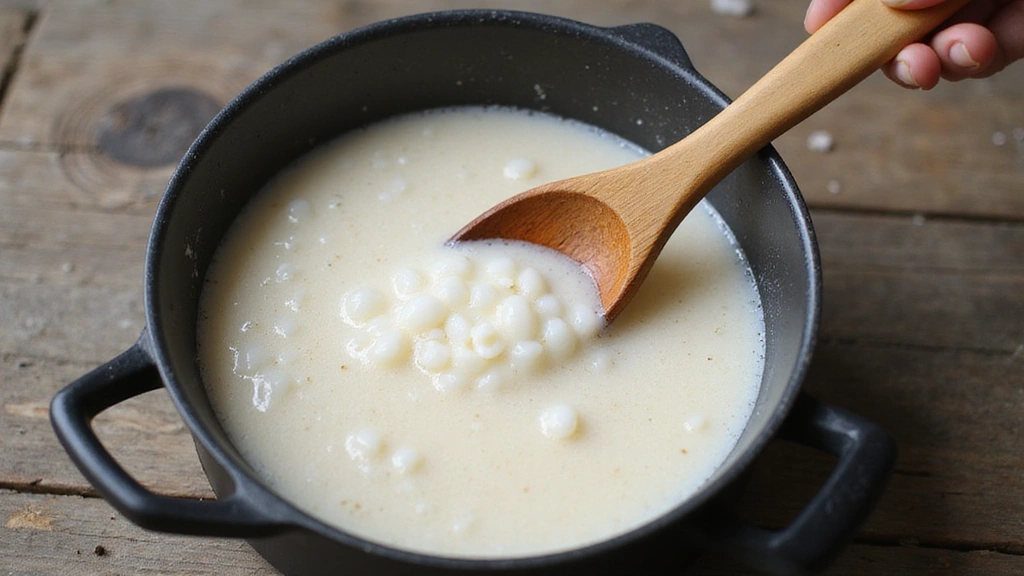
Boil 4 cups of water in a medium-sized pot.
Add 1 cup of tapioca pearls once the water reaches a rolling boil.
Stir gently to prevent sticking.
Continue boiling until the pearls float, then reduce heat to a simmer.
Step 2: Simmer Tapioca Pearls

Simmer the tapioca pearls for 10 minutes.
Stir occasionally to ensure even cooking.
Check for a chewy texture by tasting one pearl.
Remove from heat and let sit for an additional 5 minutes.
Step 3: Drain and Rinse Tapioca Pearls

Drain the tapioca pearls using a fine mesh strainer.
Rinse under cold water to stop the cooking process.
Ensure all pearls are thoroughly rinsed to remove excess starch.
Set aside in a bowl until ready to use.
Step 4: Blend Ube Base
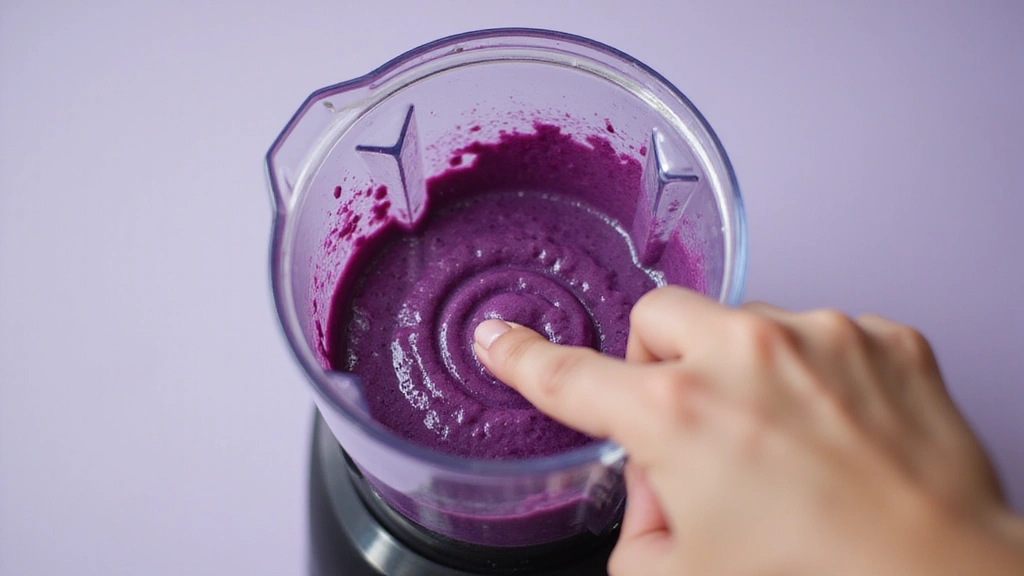
Combine 1 cup of ube jam and 1 cup of coconut milk in a blender.
Blend at high speed for 2 minutes until completely smooth.
Check for lumps to ensure a creamy consistency.
Adjust sweetness with honey if desired.
Step 5: Sweeten Ube Base
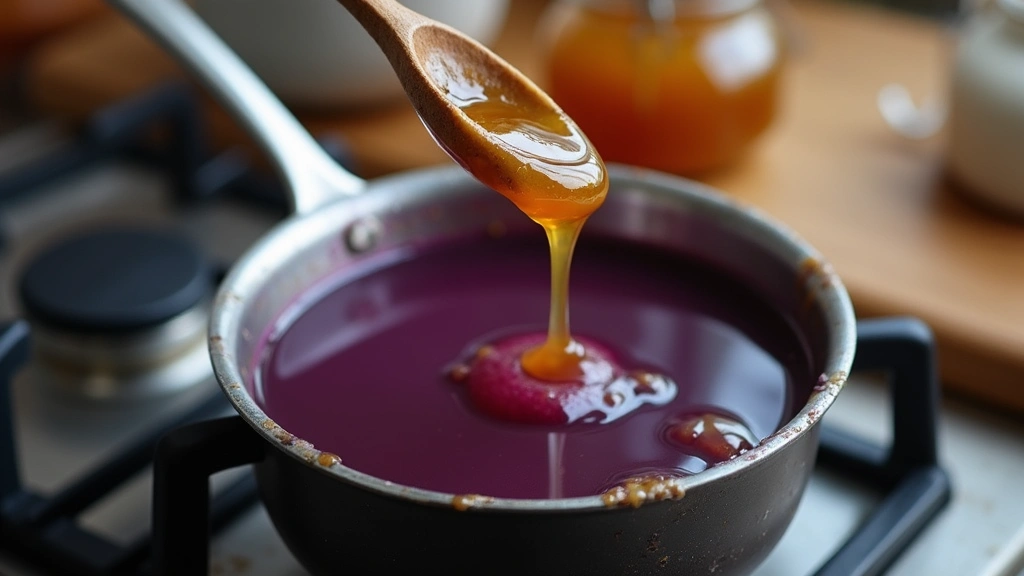
Transfer the blended ube mixture to a small saucepan.
Warm gently over low heat.
Add 2 tablespoons of honey and stir until dissolved.
Taste and adjust sweetness as needed.
Step 6: Assemble the Bubble Tea
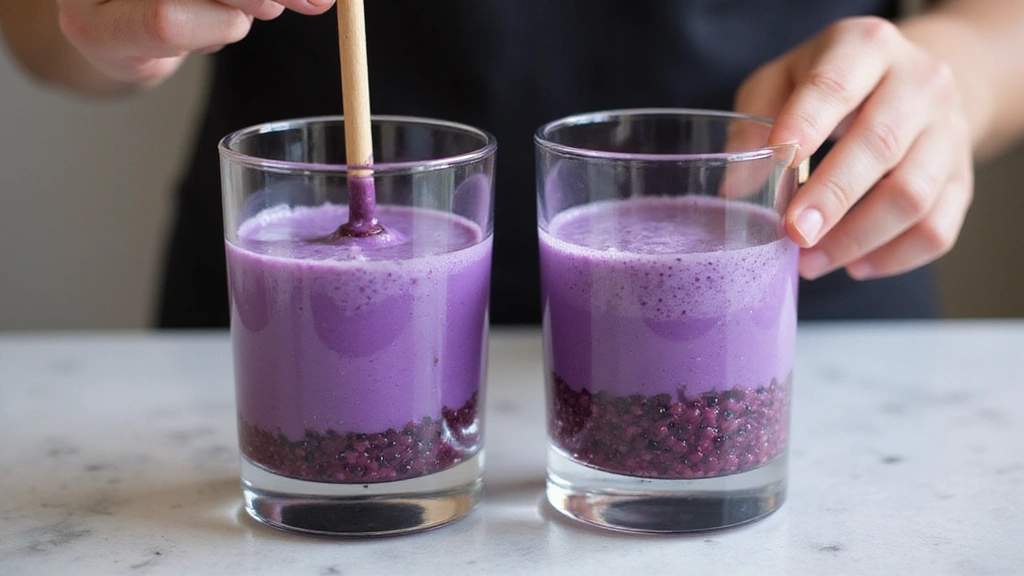
Divide the cooked tapioca pearls between two glasses.
Pour the sweetened ube mixture over the pearls.
Stir gently to combine.
Top with additional coconut milk for extra creaminess if desired.
Step 7: Add Ice and Serve
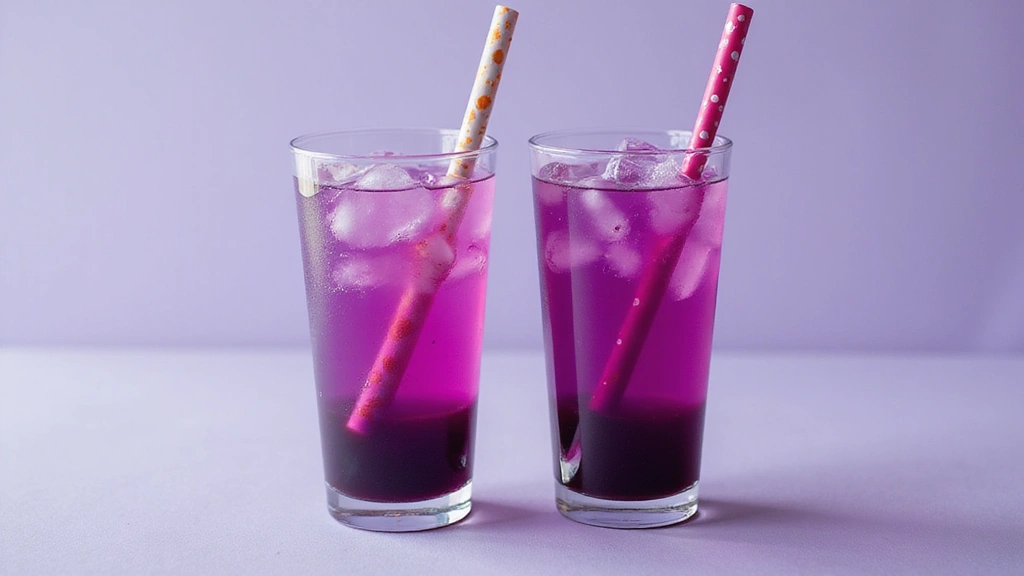
Fill each glass with ice cubes to chill the drink.
Ensure the ice is evenly distributed.
Serve immediately with bubble tea straws.
Enjoy the refreshing and creamy texture.
Step 8: Capture for Instagram
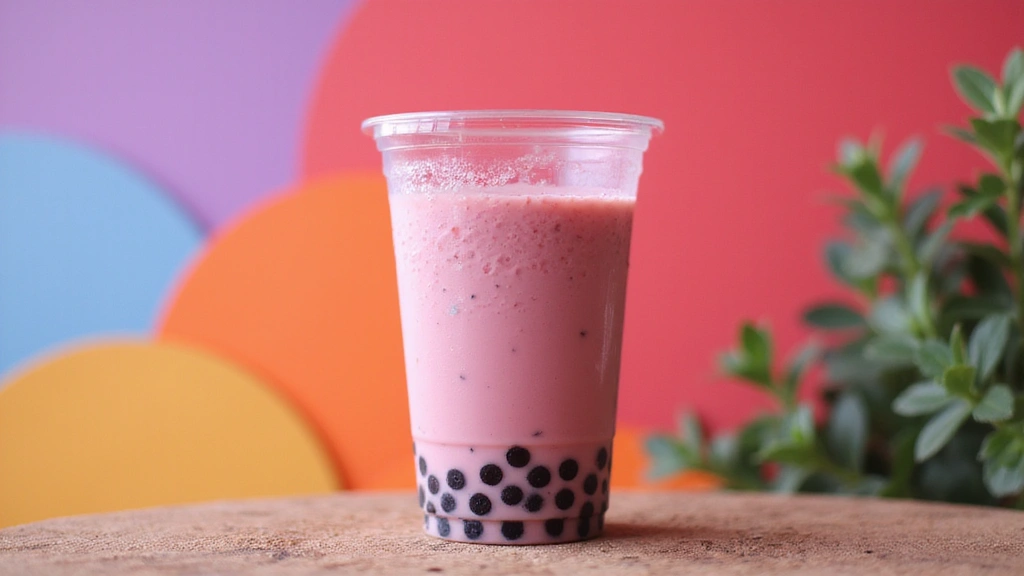
Arrange the glasses against a colorful backdrop.
Ensure good lighting to highlight the drink's vibrant color.
Take multiple shots from different angles.
Share your creation with the world!
Critical Timing and Temperature Guide
Blending Ube Base: Blend at high speed for exactly 2 minutes to ensure a smooth, lump-free consistency. Over-blending can break down the coconut milk fats, affecting texture.
Cooking Tapioca Pearls: Boil for 10 minutes until pearls float and appear translucent. Avoid overcooking as it leads to mushy pearls.
Sweetening and Warming: Warm ube mixture over low heat for 5 minutes. High heat can cause the mixture to scorch, altering the flavor.
Pro Tips for Ube Bubble Tea
• Ingredient Selection: Choose high-quality ube jam and fresh coconut milk for the best flavor. These two ingredients define the drink's distinctive taste.
• Preparation Secret: Soak tapioca pearls in cold water for 5 minutes before cooking to achieve a chewier texture.
• Temperature Management: Allow the ube mixture to cool slightly before adding ice to prevent dilution.
• Texture Enhancement: Stir the pearls frequently while boiling to ensure even cooking and maintain their perfect chewiness.
• Flavor Layering: Add a pinch of sea salt to the ube mixture to enhance the natural sweetness and depth of flavors.
• Make-Ahead Strategies: Prepare the ube base and pearls separately up to a day in advance. Store in airtight containers in the fridge.
• Restaurant-Quality Finishing Touches: Garnish with fresh coconut shavings or a sprinkle of toasted sesame seeds for an extra touch.
• Equipment Optimization: Ensure your blender is clean and free from strong odors that might affect the delicate flavor of ube.
Troubleshooting Common Issues
• Tapioca Pearls Too Hard: This is often caused by undercooking or not soaking the pearls before boiling. Ensure pearls are boiled until they float and simmered until chewy.
• Ube Mixture Too Thick: If the ube base is overly thick, add a little more coconut milk to achieve the desired consistency.
• Flavors Not Balanced: Over-sweetening can overwhelm the natural flavors. Start with less honey and adjust to taste.
• Color Not Vibrant: Low-quality ube jam or insufficient blending time can cause a dull color. Use fresh, quality ingredients and blend thoroughly.
• Ice Diluting the Drink: Adding ice directly can dilute flavors. Ensure the ube mixture is cool before adding ice for a balanced taste.
• Pearls Sticking Together: This can occur if pearls are not stirred during cooking. Stir frequently to prevent clumping.
Variations and Regional Differences
• Filipino Style: Incorporates additional ingredients like pandan for an aromatic twist and emphasizes the use of fresh, homemade ube halaya.
• Taiwanese Style: Features a combination of black tea and milk with ube flavoring, creating a balanced contrast between tea and ube.
• Vegan Variation: Uses almond or oat milk instead of coconut milk and agave syrup instead of honey for a plant-based option.
• Matcha-Ube Fusion: Combines matcha powder with the ube base for a unique blend of earthy and sweet flavors, popular among adventurous tea enthusiasts.
Food Science Behind the Recipe
• Gelatinization of Tapioca: Understanding how starch granules absorb water and swell is key to achieving the ideal chewy texture of tapioca pearls.
• Emulsification of Ube and Coconut Milk: The blending process creates a stable emulsion that ensures the ube and coconut milk mix evenly, resulting in a creamy texture.
• Sweetness Perception: The interaction between honey and ube affects how sweetness is perceived, highlighting the importance of balance for optimal flavor.
Frequently Asked Questions
What's the most common mistake people make when preparing Ube Bubble Tea? Overcooking the tapioca pearls, which can lead to a mushy texture. Always follow the recommended cooking time.
Can I use frozen ube instead of ube jam? Yes, but you'll need to cook and mash it first to achieve a smooth consistency similar to jam.
Is it necessary to add sweetener? While optional, sweetener enhances the natural flavors of ube and balances the drink.
How can I make the drink less sweet? Reduce the amount of honey or use unsweetened coconut milk to control sweetness levels.
Why is my ube mixture separating? Improper blending or using a low-quality blender can cause separation. Ensure thorough blending at high speed.
Can I prepare the tapioca pearls in advance? Yes, but consume within a few hours for the best texture. Store in syrup to prevent drying out.
How do I store leftovers? Store the ube base and cooked pearls separately in the fridge, and combine just before serving.
What can I use instead of coconut milk? Almond milk or whole milk can be used, though it may alter the flavor profile slightly.
Serving and Presentation Guide
• Traditional Presentation: Serve in a clear glass to showcase the vibrant purple color, garnished with a sprig of mint or a slice of fresh ube.
• Modern Twist: Layer with matcha or taro for a multi-colored effect that adds visual interest.
• Party Style: Serve in mason jars with rainbow-colored bubble tea straws for a fun and festive look.
• Minimalist Approach: Use a tall, slim glass with a simple straw to emphasize the drink's natural beauty.
Conclusion
Ube Bubble Tea is more than just a drink; it's an experience that delights the senses.
With its unique flavor and eye-catching appearance, it's sure to be a hit at your next gathering.
Don't hesitate to try this recipe and share your colorful creations with friends and family.

